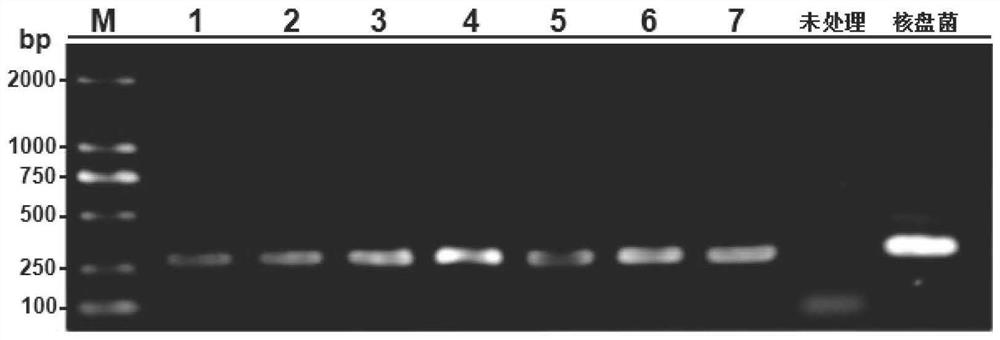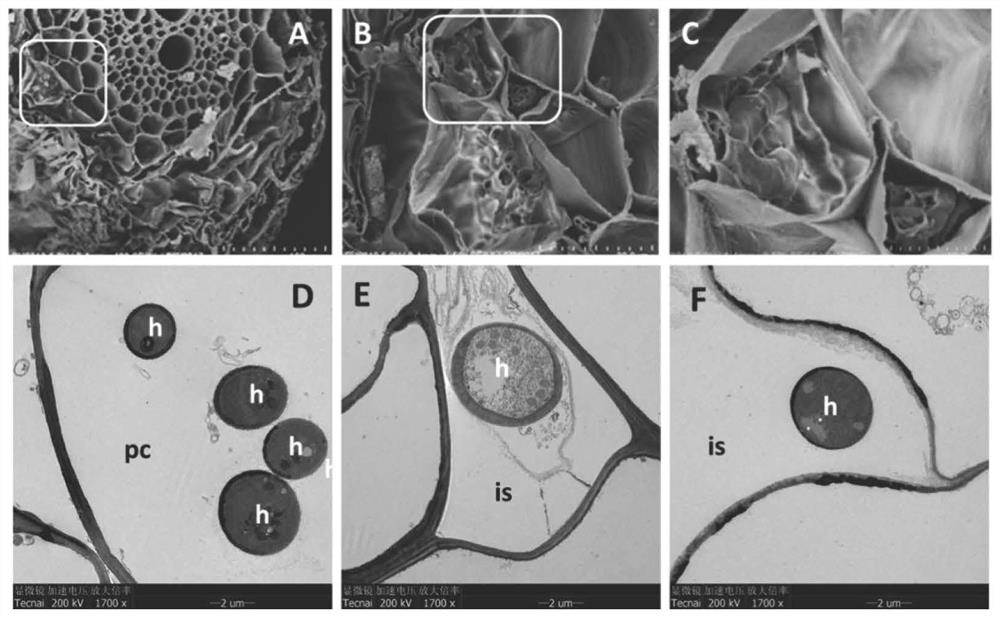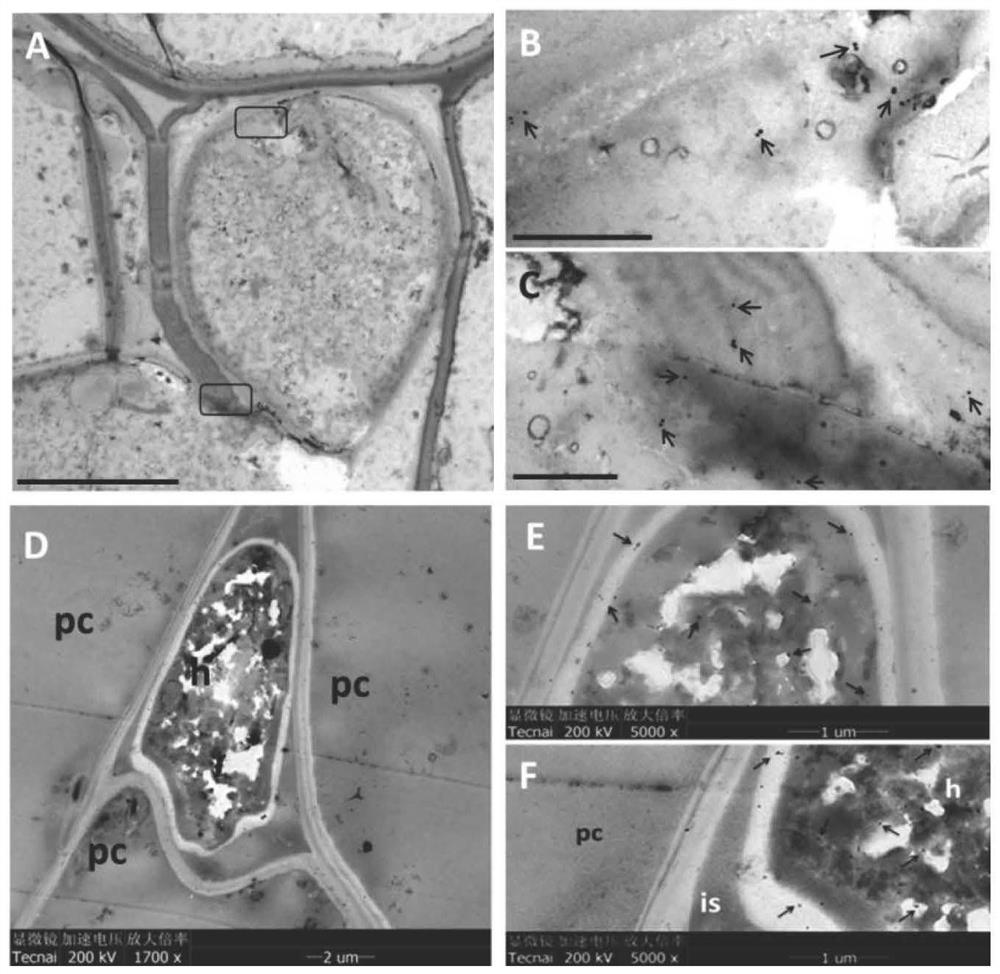A method for increasing yield and preventing diseases of wheat and its application
A technology of wheat and wheat seeds, applied in the field of crop cultivation, can solve problems such as labor shortage, health threats of beneficial microorganisms, and resistance of pathogenic bacteria, and achieve the effects of improving resistance to stripe rust, increasing chlorophyll content and photosynthetic rate, and increasing thousand-grain weight
- Summary
- Abstract
- Description
- Claims
- Application Information
AI Technical Summary
Problems solved by technology
Method used
Image
Examples
preparation example Construction
[0057] In the present invention, the preparation method of the fermented liquid of described Sclerotinia sclerotiorum comprises: inoculating Sclerotinia sclerotiorum on the liquid fungal culture medium, fermenting at 18~22 ℃, obtains the number of viable bacteria in 1.4×10 5 Fermentation broth of Sclerotinia above cfu / mL.
[0058] In the present invention, the liquid fungal culture medium includes but not limited to PDB medium or broth medium. In the present invention, the fermentation temperature of the sclerotinia is preferably 20°C; the fermentation time is preferably 55-70 hours, more preferably 60-65 hours. In the present invention, the fermentation is accompanied by stirring; more preferably, the stirring speed is preferably 120-200 r / min, more preferably 150 r / min.
[0059] Specifically, the initiation of wheat seeds of the present invention comprises the following steps:
[0060] (1) Soak the wheat seeds to be treated in water after being sterilized, and wait for the...
Embodiment 1
[0068] Embodiment 1: Sclerotinia attenuated bacterial strain DT-8 is to the initiation of wheat seed
[0069] 1. Test material
[0070] Wheat varieties: winter wheat Zheng 9023 and spring wheat Yongliang No. 4, commercially available.
[0071] Sclerotinia attenuated strain DT-8: carrying DNA virus SsHADV-1.
[0072] 2. Preparation of water suspension concentrate of strain DT-8: Cultivate the attenuated strain DT-8 of Sclerotinia sclerotiorum in a 50L fermenter for 60h under the conditions of 20°C, 150r / min, and natural pH. Made by adding 0.05% streptomycin sulfate and 4% trehalose, the number of live bacteria was 1.4×10 5 cfu / mL.
[0073] 3. Initiation of wheat seeds: use 5% 84 disinfectant to sterilize wheat seeds for 10 minutes, wash them with sterile water three times, each time for 1 minute; The attenuated sclerotinia strain DT-8 water suspension was used to mix the wheat seeds at room temperature, soak the seeds for 4 hours, 500mL fermentation broth / 5kg wheat seeds, a...
Embodiment 2
[0074] Embodiment 2: sclerotinia attenuated bacterial strain DT-8 seed causes sclerotinia to grow endogenously in wheat
[0075] 1. Detection of Sclerotinia in wheat seedling leaves by PCR
[0076] The wheat seed Zheng 9023 prepared in Example 1 was cultivated in sterile culture soil for 45 days, the surface of the wheat sample was sterilized (0.5% sodium hypochlorite 10min), rinsed with phosphate buffer (pH7.2) for 3 times after rinsing with distilled water. detection of Sclerotinia in wheat seedlings.
[0077] Genomic DNA extracted from wheat leaves by CTAB method was used as a template, and S. sclerotiorum specific primers XJJ21 and XJJ222 (as shown in Chinese patent ZL200810236958.5, XJJ21: 5'-GTTGCTTTGGCGTGCTGCTC-3' (as shown in SEQ ID NO: 1) ; XJJ222: 5'-CTGACATGGACTCAATAC CAATCTG-3' (shown as SEQ ID NO: 2) is a primer, with Sclerotinia genomic DNA as a positive control, untreated wheat as a negative control, to Sclerotinia in wheat leaves Perform PCR detection. The PC...
PUM
 Login to View More
Login to View More Abstract
Description
Claims
Application Information
 Login to View More
Login to View More - R&D Engineer
- R&D Manager
- IP Professional
- Industry Leading Data Capabilities
- Powerful AI technology
- Patent DNA Extraction
Browse by: Latest US Patents, China's latest patents, Technical Efficacy Thesaurus, Application Domain, Technology Topic, Popular Technical Reports.
© 2024 PatSnap. All rights reserved.Legal|Privacy policy|Modern Slavery Act Transparency Statement|Sitemap|About US| Contact US: help@patsnap.com










